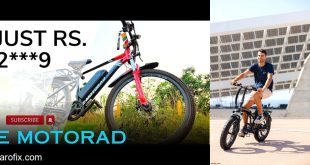Can You Build a Custom Electric Dirt Bike?
If you’ve ever dreamed of ripping through trails with zero emissions, insane torque on tap, and the freedom to customize your ride exactly how you like it, building a custom electric dirt bike might just be your new obsession. But can you actually build one from scratch? Absolutely—but there’s a mix of technical know-how, hands-on skills, and a passion for tinkering required. Let’s dive into the nuts and bolts of building your very own electric dirt bike.
Why Consider a Custom Electric Dirt Bike?
Electric dirt bikes (e-dirt bikes) aren’t just cool—they’re changing the way we think about off-road fun and sustainability. With no gasoline engine, minimal maintenance, and instant torque that makes even steep hills feel like a playground, e-dirt bikes are perfect for riders of all levels. Building your own lets you:
- Tailor performance to your riding style.
- Choose sustainable components and reduce your environmental footprint.
- Experiment with cutting-edge tech like regenerative braking or smart battery management.
From my own experience, nothing beats the satisfaction of hitting a dusty trail on a bike you literally built with your own hands. There’s a unique thrill in knowing that every watt of power comes from your own design choices.
Essential Components of a Custom Electric Dirt Bike
To build a functional and fun e-dirt bike, you need to understand the core components:
1. The Frame
The frame forms the backbone of your build. Most builders repurpose a traditional dirt bike frame, but there are also specialized electric frames designed to house batteries and motors. Key points:
- Material: Aluminum is lightweight, steel is more durable but heavier.
- Geometry: Ensure proper suspension travel and rider ergonomics.
- Mounting Points: Check compatibility with motor mounts, battery cages, and controllers.
2. Electric Motor
The motor is the heart of your e-dirt bike. Options vary from hub motors (simpler, quieter) to mid-drive motors (better torque and efficiency). Technical details to consider:
- Power Rating: 3 kW to 10 kW for trail-level bikes; pro-level builds may exceed 20 kW.
- RPM & Torque: High torque ensures quick acceleration; motor RPM affects top speed.
- Cooling: Water-cooled motors are ideal for heavy off-road use to prevent overheating.
From personal tinkering, I found that mid-drive motors paired with a high-quality chain drive give a natural, dirt-bike feel—almost like a gas bike, but cleaner.
3. Battery Pack
Battery choice impacts range, weight, and performance. Most builders opt for lithium-ion packs due to their energy density.
- Voltage: 48V–72V for standard builds; higher voltage = higher speed potential.
- Capacity: Measured in Ah; higher = longer ride time, but heavier.
- Configuration: Custom builds often use modular packs for easier maintenance.
Tip: Always balance the trade-off between weight and range. On one of my builds, I used a 72V 30Ah pack and got 60+ minutes of intense trail riding, but the bike felt heavy over technical terrain.
4. Controller
The controller manages power delivery from your battery to the motor. A high-quality controller allows smoother acceleration and regenerative braking. Key specs:
- Continuous Current Rating: Must match motor specs to avoid burnout.
- Programmability: Adjust throttle curve, torque limits, and braking strength.
- Thermal Management: Some controllers need external cooling for intense rides.
5. Throttle, Brakes, and Suspension
Don’t underestimate these “secondary” systems. For a custom build:
- Throttle: Thumb or twist, ideally with smooth output for technical trails.
- Brakes: Hydraulic disc brakes are almost mandatory; regenerative braking can reduce wear.
- Suspension: Front forks and rear shocks must handle your bike’s weight and terrain stress.
Steps to Build Your Custom Electric Dirt Bike
Building a bike from scratch isn’t just plug-and-play. Here’s a rough roadmap:
- Choose a frame: Repurpose an old dirt bike or buy a custom electric frame.
- Select motor and battery: Match power requirements and space constraints.
- Install motor mount and drivetrain: Ensure chain/belt alignment and torque settings.
- Wire the electrical system: Connect motor, controller, battery, and throttle with correct gauge wiring.
- Mount brakes and suspension: Adjust for weight distribution.
- Test and tweak: Start with low power settings, check for overheating, chain tension, and smooth throttle response.
One memorable test ride for me involved a last-minute misalignment of the chain. The bike was launching like a rocket, but a few tweaks later, it rode like butter through the dirt.
Frequently Asked Questions About Custom Electric Dirt Bikes
How much does it cost to build a custom e-dirt bike?
Costs vary depending on components. A mid-range build usually runs $2,500–$5,000, while high-end, high-power setups can exceed $10,000. Budgeting is key—especially for batteries and motors.
Is it safe to build your own electric dirt bike?
Yes, with proper precautions. Use high-quality components, check wiring and insulation, and always test at low speeds first. Safety gear is non-negotiable—helmet, gloves, and pads are essential.
How long does it take to build one?
Depends on experience. Beginners may take 2–4 weeks of evenings and weekends, while seasoned builders can assemble a basic ride in a few days. Don’t rush; meticulous wiring and alignment are crucial.
Do I need mechanical skills?
Basic mechanical knowledge is essential. Skills in soldering, wiring, torque adjustments, and suspension tuning will save headaches. If you’re new, start with a kit or seek guidance from online communities.
Can I upgrade an existing dirt bike to electric?
Absolutely. Conversion kits exist that replace gas engines with electric motors, often including battery packs and controllers. It’s a faster way to experience electric riding while keeping your favorite frame.
Practical Tips for Your Build
- Plan before buying: List all components, check compatibility, and sketch your wiring layout.
- Weight management: Battery placement affects balance; keep the center of gravity low.
- Regular maintenance: Clean connectors, lubricate chains, check suspension—electric motors reduce some maintenance but don’t eliminate it.
- Test incrementally: Start at low speeds, gradually increase power to identify issues early.
- Join a community: Forums and social media groups offer advice, parts reviews, and troubleshooting tips.
Trends and Sustainability in E-Dirt Bikes
The e-dirt bike revolution is more than a hobby—it’s part of the sustainable transportation movement. Zero-emission motors reduce our carbon footprint, and quieter rides help preserve wildlife areas. Emerging trends include:
- Smart Batteries: Integrated BMS with apps for monitoring charge, temperature, and range.
- Lightweight Materials: Carbon fiber and advanced alloys for better performance.
- High-Power Motors: 20+ kW setups are pushing off-road speed limits safely.
- Connected Systems: GPS, telemetry, and diagnostics for adventure and racing.
From personal experience, I’ve seen first-hand how e-dirt bikes attract new riders who were intimidated by gas bikes—especially young riders looking for eco-friendly fun. The future will likely bring fully modular, app-controlled bikes that you can customize digitally before even touching a wrench.
Final Thoughts
Can you build a custom electric dirt bike? Absolutely. Is it easy? Not always—but it’s an incredibly rewarding journey that blends engineering, adventure, and sustainability. Whether you’re a beginner looking to convert a simple frame or an experienced builder aiming for a high-power off-road beast, the path is full of learning, problem-solving, and adrenaline-fueled fun.
Remember: plan carefully, respect safety protocols, and embrace the tinkering process. Your custom electric dirt bike isn’t just a machine—it’s a statement about innovation, sustainability, and the joy of building something with your own hands. Now grab your wrench, pick your motor, and hit the trails responsibly—your next adventure is electric!
Happy building, and may your trails be epic and your emissions nonexistent!
 Electric Bike & Bicycle Repair Hub Master DIY electric and traditional bike repairs with practical tips and trusted product recommendations.
Electric Bike & Bicycle Repair Hub Master DIY electric and traditional bike repairs with practical tips and trusted product recommendations.



